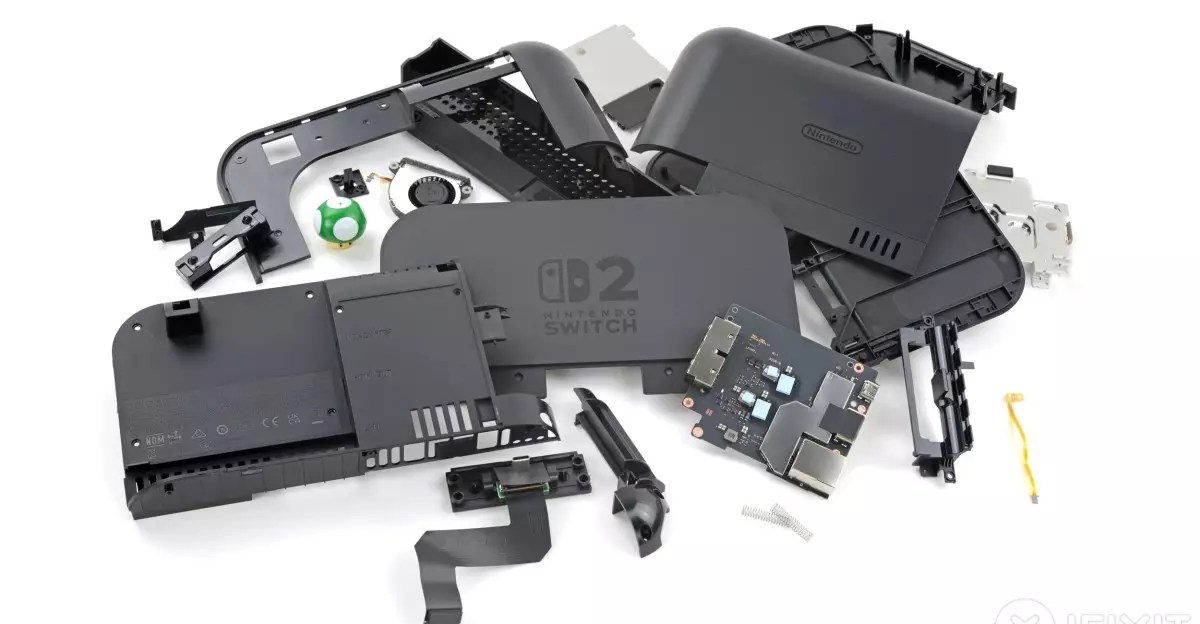Nintendo has long enjoyed a fervent loyalty from its fan base, driven largely by innovative gaming experiences and nostalgia. However, their latest console, often dubbed the Switch 2, raises serious concerns about user accessibility, particularly in the realm of repairability. This issue has been highlighted by iFixit, a company dedicated to promoting repair and sustainability in technology. Their teardown of the Switch 2 not only placed the new console’s repairability at a disheartening score of 3 out of 10, but it also exposed a troubling trajectory in gaming hardware design that prioritizes sleekness over usability and longevity.
The Deteriorating Repairability Scores
The original Nintendo Switch was already panned by iFixit, which downgraded its repairability score from a respectable 8 to a mere 4 when re-evaluated against 2025’s rigorous standards. Fast forward to the Switch 2, and Nintendo seems to have taken a step further in the wrong direction. The transition from prior models to this latest iteration reflects not only a lack of foresight but also an alarming disregard for the consumer’s right to repair. With significant components glued into place and others soldered directly onto the mainboard, the Switch 2 has become a fortress rather than a friendly consoled, essentially rendering the device less accessible to casual users and enthusiasts alike.
The Synthetic Adhesive Apocalypse
A particularly egregious aspect of the Switch 2’s design is the reliance on strong adhesives for the battery. This method may streamline manufacturing, but at what cost? Repairing devices becomes a Herculean task, detrimental to the average user who lacks the technical prowess or tools that professionals boast. In iFixit’s teardown, they noted that removing the battery was akin to navigating an “absolute mission,” requiring numerous tools and solvents, only to leave disintegrated foam in its wake—a nightmare for future repairs. The significant labor involved in simple tasks paints a grim picture of a product designed for disposability rather than sustainable usage.
Compounding the Issues with Soldering
In a disheartening turn, components such as the game card reader, which previously enjoyed a modular design for ease of replacement, have now been soldered to the motherboard. This change not only adds difficulty to repairs but also contributes to an overall degradation of the device’s lifespan. The concern escalates when considering that the new model employs various types of thermal paste that solidify over time, becoming ineffective and risking overheating—an entirely preventable issue if the manufacturer had prioritized a user-friendly approach to component repairs.
Java Joy but No Joy-Cons
Even the beloved Joy-Con controllers, which have faced their own history of durability issues related to joystick drift, have not been spared from Nintendo’s neglect towards repairability. The use of traditional potentiometer technology, coupled with a more complex design, makes the issue of stick replacement even more daunting. With the same weaknesses that plagued the original design—such as wear and tear on resistive material—players find themselves in a frustrating loop of needing repairs that are now exponentially more difficult to attempt.
Third-Party Solutions and Consumer Dissatisfaction
Given Nintendo’s apparent commitment to obsolescence, consumers are left dependent on third-party repair solutions or alternative parts. Without official manuals or parts released by Nintendo, the landscape is fraught with uncertainty. Users looking for a do-it-yourself approach are not only navigating the complexities of the device but are often at the mercy of unofficial sources that may not meet the quality expected of a Nintendo product.
In essence, the bleak path that Nintendo’s new console is paving raises critical questions about the ethics of design in the tech industry. As awareness of repairability continues to grow, it’s essential for companies like Nintendo to reflect on their approaches to product longevity and consumer empowerment, lest they lose the goodwill of a dedicated customer base. The Switch 2 serves as a cautionary tale—illustrating that while innovation is essential, neglecting repairability is a perilous step backwards for both the manufacturing process and the gaming community.


Leave a Reply